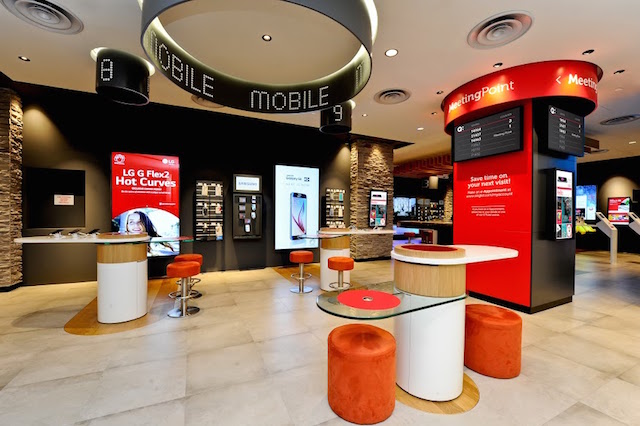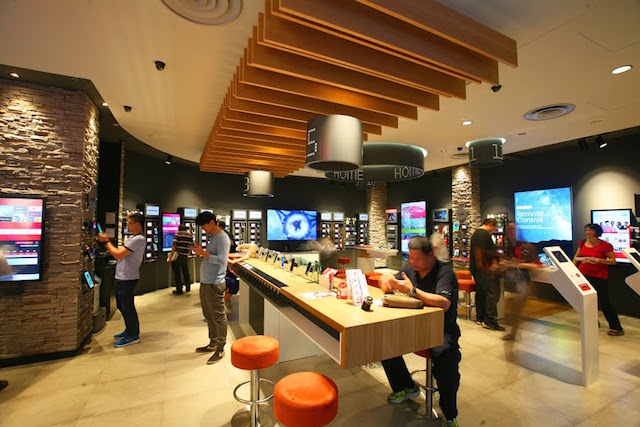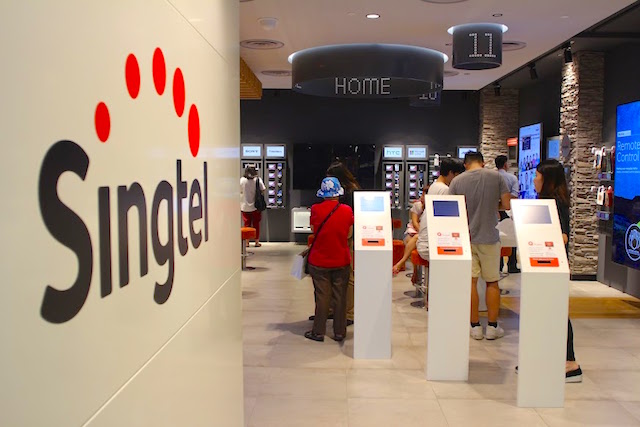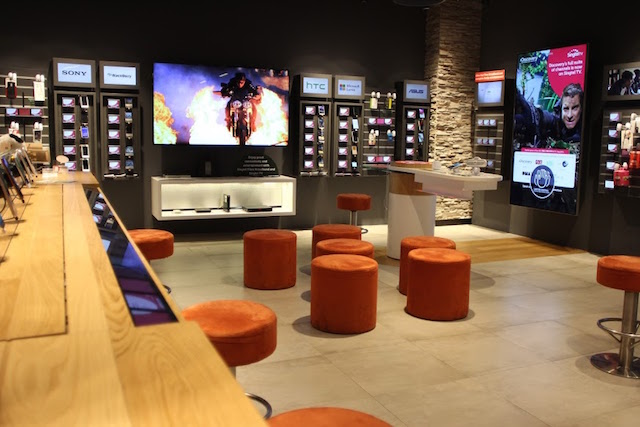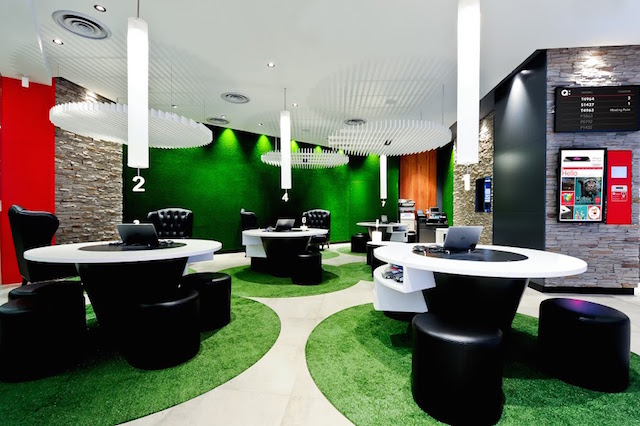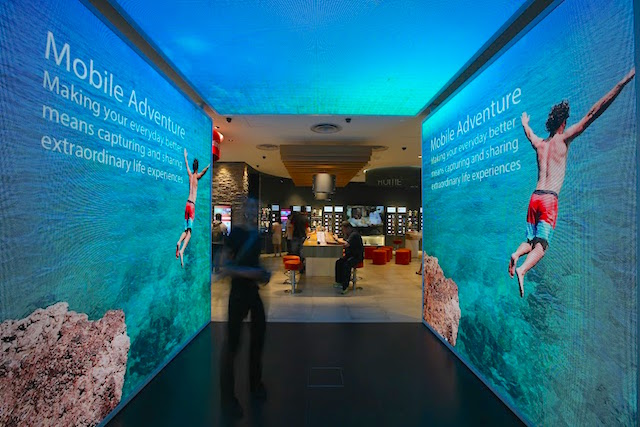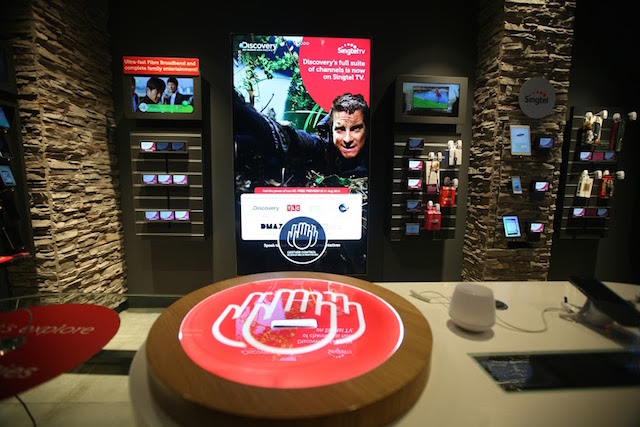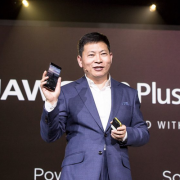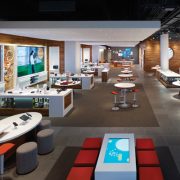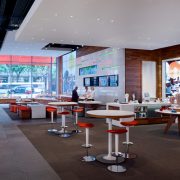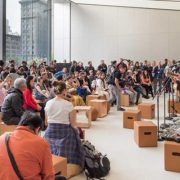Store Profile: SingTel Singapore
Store Profile: SingTel Singapore
By Inside Retail Asia
SingTel Singapore has repositioned itself as a ‘human services brand’ by putting the customer at the core of its retail store design rationale.
The latest generation store rendition was created by Sydney-based design agency Public Design Group. Co-founder and director of retail strategy and business development, Jason Pollard, says the agency is focused on ensuring that SingTel’s store design strategy supports the market opportunity and the business opportunity – with particular focus on recognising the rapid technological change driving the telecommunications sector and business model.
“It’s not about device sale, the plans or the data,” he explained. “That’s only one-third of the total revenue that’s going to be made in the future; the other two thirds is called the Internet of Things or information and communications technology.”
Since launching the partnership with SingTel Singapore, Public Design Group has implemented the new design across four additional SingTel stores, with the telco embracing the concept of ‘brand experience’ as opposed to ‘branded space’.
Pollard explains that taking lifestyle propositions and fully enabling them across a variety of devices with different services represents the fundamental design ethos of the store.
The approach to designing the store represents a departure from that of other telecommunications retail stores, which often emulate the streamlined devices and technology.
“We’re not celebrating devices anymore, we’re celebrating what they can do,” said Pollard.
Customer centric design
The store’s entrance features a digital portal showpiece, identified by Public Design Group as a gateway into the new market of information and communications technology solutions. The portal’s purpose is to emphasise SingTel’s shift in brand focus from product to people. “SingTel as a brand no longer wants to be perceived as a technology organisation,” Pollard said.
“They want to be perceived as a service brand, which is mirrored in providing the very latest greatest lifestyle solutions for their customers.”
Singaporean retailers have widely adopted an electronic queuing system, as part of dealing with high volumes of traffic. Public Design Group saw an opportunity for personalising the customer experience and collaborated with digital agency, Texture, in Singapore to develop a bar code system, which allows waiting customers to explore the store instead of standing in a queue.
The ‘Q ticket’ is imbued with a barcode that can be scanned on any of the hundreds of micro screens around the store. Each screen is associated with a product or accessory, providing detail and price. Once scanned, the detail is stored in a virtual shopping basket, which is viewed by the store assistant prior to them meeting the customer.
“That barcode allows you build a virtual shopping basket of things that interest you, so that by the time you go to meet the service staff and do whatever you want to do, you can hand them your virtual shopping basket,” explained Pollard. “Immediately that opens conversations relevant to the customer and empowers the staff to be more relevant to their customer.”
A customer service lounge, featuring leather wing back chairs, is designed with the purpose of creating an environment that encourages more consultative conversations. Placing the service proposition in the front window of the store as opposed to the back of the store emphasises SingTel’s focus on providing a premium customer experience.
“One of the key factors of having to deal with a Telco is addressing how well they are going to look after me when it all goes wrong, so that service lounge is a key part of winning market share and making a statement in the market place,” Pollard said. “At SingTel, we’re looking after our customers – even if they’re not buying, we’re solving problems.”
Pull over push
As part of the new ‘pull’ sales strategy for SingTel, promotional material in the store is significantly reduced, with statistics showing high value transactions typically come from conversations rather than communications.
Similarly, new social trends and customer behaviours were studied to showcase lifestyle themed propositions on gesture controlled displays.
Gesture control for the large format screens within the store was employed to allow customers to scroll through the various ‘integrated technology’ stories in the same way as they would on a tablet.
“People don’t like touching big technology because it’s hot, expensive and it puts them in the spotlight,” argued Pollard.
“SingTel has put the customer first,” said Pollard. “We have developed a customer centric store and that’s why it’s such a great experience.”
RECHI Provides Professional Retail Mobile Phone Store Design And Fitout Service
For more about us and our new retail solutions,find us at RECHI Retail



